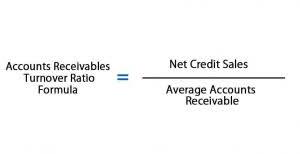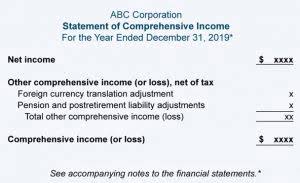
The organization must use Form 1096, Annual Summary and Transmittal of U.S. Information Returns, to transmit to the IRS paper Forms 1099, 1098, 5498, and W-2G, which are information returns reporting certain amounts paid or received by the organization. Report all such returns filed for the calendar year ending with or within the organization’s tax year.
- The compensation may also need to be reported on Schedule J (Form 990), Part II (see the instructions for Form 990, Part VII, Section A, line 5).
- This statement breaks down your organization’s expenses into program, administrative, and fundraising categories.
- As you organize your expenditures into the categories of program, administrative, and fundraising spending, don’t hesitate to reach out to a nonprofit accountant who can answer your questions and help you make the most of this report.
- Refer to the specific instructions in this part for completing each column.
- Reportable compensation generally refers to compensation reported in box 1 or 5 (whichever amount is greater) of Form W-2, Wage and Tax Statement; box 1 of Form 1099-NEC, Nonemployee Compensation; and box 6 of Form 1099-MISC, Miscellaneous Information.
- Proper allocation supports transparency and strengthens donor confidence by showing how each dollar contributes to the organization’s mission.
The benefits of ‘budgeting for results’
The organization is responsible for keeping records of all travel and entertainment expenses related to a government official whether or not the expenses are reported on line 18 or line 24. Enter contributions by the filing organization, common paymasters, and payroll/reporting agents to the filing organization’s employee benefit programs (such as insurance, health, and welfare programs that aren’t an incidental part of a pension plan included on line 8), and the cost of other employee benefits. For an employee who works on fundraising 40% of the time and program management 60% of the time, an organization must allocate that employee’s salary 40% to fundraising and 60% to Accounting Periods and Methods program service expenses. It can’t report the 100% of salary as program expenses simply because the employee spent over 50% of his time on program management. Don’t use this column to report costs of special meetings or other activities that relate to fundraising or specific program services.

Part VI. Governance, Management, and Disclosure
- A disqualified person, regarding any transaction, is any person who was in a position to exercise substantial influence over the affairs of the applicable tax-exempt organization at any time during a 5-year period ending on the date of the transaction.
- The administrative allocation, on the other hand, accounts for expenses unrelated to the primary purpose of the organization but necessary for its operations.
- United Way and similar federated fundraising organizations should report grants to member or participating agencies on line 1.
- The statement of functional expenses gives you insight into how well your nonprofit used the money it received from donors or grants.
- It helps you ensure that funds are being used efficiently and in alignment with your mission.
This includes a hospital facility that is operated through a disregarded entity or a joint venture treated as a partnership for federal income tax purposes. It doesn’t include hospital facilities that are located outside the United States. It also doesn’t include hospital facilities that are operated by entities organized as separate legal entities from the organization that are taxable as a corporation for federal tax purposes (except for members of a group exemption included in a group return filed by an organization).

Gross receipts.

Enter the cost or other basis of all land, buildings, equipment, and leasehold improvements held at the end of the year. Include both property held for investment purposes and property used for the organization’s exempt functions. If an amount is reported here, answer “Yes” on Part IV, line 11a, and complete Schedule D (Form 990), Part VI. The amount reported on line 10a must equal the total of Schedule D, Part VI, columns (a) and (b). Enter the total funds that the organization has in cash, including amounts held as “petty cash” at its offices or other facilities, and amounts held in banks in non-interest-bearing accounts. Properly distinguishing between payments to affiliates and grants and allocations is especially important if the organization uses Form 990 for state reporting purposes.

Organizations that answer “Yes” on either of How to Run Payroll for Restaurants these questions must also check the box in Part I, line 2, and complete Schedule N (Form 990), Part I or II. Answer “Yes” if the organization engaged in lobbying activities or had a section 501(h) election in effect during the tax year. All section 501(c)(3) organizations that had a section 501(h) election in effect during the tax year must complete Schedule C (Form 990), Part II-A, whether or not they engaged in lobbying activities during the tax year. Enter the paid preparer’s PTIN, not his or her SSN, in the “PTIN” box in the paid preparer’s block.
Appendix I. Use of Form 990 or 990-EZ To Satisfy State Reporting Requirements

Many other organizations, however, have only reported expenses on the Form 990. This may be the first time they will be including a functional expense statement or schedule within their financial statements. Entities should disclose their allocation methodology either in the notes to the financial statements or in the statement of functional expenses. This transparency allows readers to understand how management divided expense items among various functions.
In addition, for purposes of Form 990, including Part VII, Section A, and Schedule J (Form 990), treat as an officer the following persons, regardless of their titles. To determine which persons are listed in Part VII, Section A, the organization must use the calendar year ending with or within the organization’s fiscal year for some (those whose compensation must exceed minimum thresholds in order to be reported) and the fiscal year for others. Report officers, directors, and trustees that served at any time during the fiscal year as “current” statement of functional expenses required officers, directors, and trustees.

